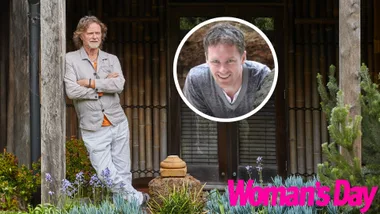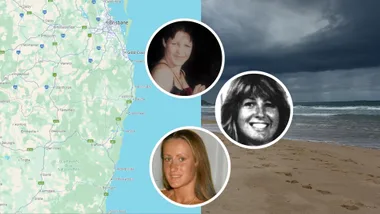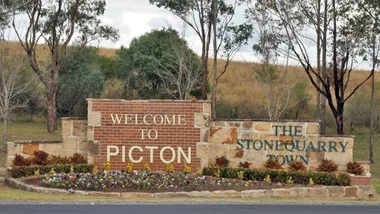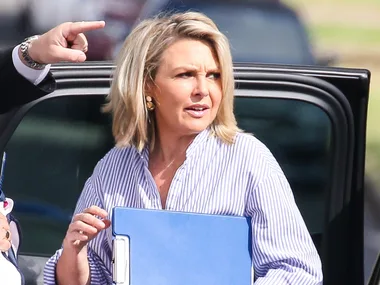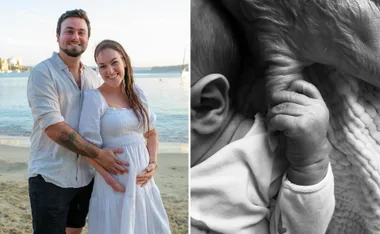Before Australians go to vote on Saturday, read this guide to 11 key policy areas that could swing the vote. What are the parties promising on issues ranging from tax to education to infrastructure?
Tax
As predicted, superannuation has been a major battleground during the election campaign. Both parties’ positions were outlined prior to the campaign, but the Coalition’s proposed changes, which include capping concessional contributions to $25,000 and the introduction of a $500,000 lifetime cap, have angered many Liberal Party supporters.
Opposition Leader Bill Shorten pledged to block any retrospective changes to super, although this has been branded a furphy.
Similarly, the Coalition’s proposed company tax continues to be a strong point of debate. The Coalition, which will give small businesses a tax cut that would be expanded to all companies within ten years, is holding firm about its long-term economic benefits. Labor has suggested the benefactors will be the big end of town, such as banks.
Meanwhile, the Coalition has consistently crafted a message that Labor will simply raise taxes.
As part of its ten-year economic plan, Labor will target family tax benefits, tightening the means test for Family Tax Benefit A and reducing the payment by 50% for families with incomes of more than $100,000.
Both the Coalition and Labor will raise the tobacco excise by 12.5% a year for four years. But Labor denied Coalition claims of a $19.5 billion black hole arising from the differences in the costings between the two parties.
If elected, Labor will confine negative gearing to new housing and halve the capital gains subsidy for assets bought after July 1, 2017 – from 50% to 25%. The Coalition has definitively ruled out any reform of negative gearing.
The issue of tax avoidance has been low profile so far. The Coalition will bring in a “Google Tax” designed to tackle multinational companies structured to avoid tax, while Labor will focus more on tightening up the rules that regulate excessive tax-deduction claims, and improving data-matching rules to achieve better compliance.
Jobs
The issue of job creation has been a pivotal plank for both the Coalition and Labor in the final weeks of the campaign.
Both have competing visions of reducing youth unemployment. The Coalition’s PaTH program, announced in the May budget, offers companies A$1,000 to take on young, unemployed people as interns for up to 12 weeks and a further payment of between $6,500 and $10,000 if they hire them full time. Interns will receive $100 per week on top of their welfare payments.
Labor’s Working Futures Program offers a six-week “work-readiness” course, a six-month work placement with an employer (paid at a training wage, a percentage of the award wage) and a Certificate III in a subject of their choice on successful completion. Labor has also promised to overcome barriers to employment in disadvantaged communities.
A more contentious jobs plan was a $100 million bailout proposal from Labor for the South Australian steelmaker Arrium. This was matched by the Coalition, which has offered $49.2 million to save 2,700 South Australian jobs.
More broadly, the Coalition argues its company tax cuts will help create jobs and growth.
A problem that has not really been tackled by either major party in this campaign is the issue of underemployment.
Labor committed to establish ten Commonwealth Institutes of Higher Education as part of its argument that well-resourced education is crucial to developing skills that will help people find jobs and foster economic growth.
Economic management
The economic credentials of each party are under the campaign microscope. The Coalition has campaigned strongly that “Labor is at war with business”, mainly due to its opposition to the Coalition’s proposed company tax cut.
In an effort to bolster confidence, Labor launched a ten-year economic plan and indicated it would return the budget to surplus in 2020-21 – the same timing as the Coalition. But it has indicated it would allow the deficit to worsen over the short term.
Labor also released its savings, which included tightening the Family Tax Benefit system and tackling so-called “zombie” measures that the government has not been able to get through the parliament.
This followed the Parliamentary Budget Office releasing an update of the impact of unlegislated measures carried forward from the 2014 budget and later into this year’s budget which put the impact over the forward estimates at more than A$8 billion.
As expected, the Pre-Election Economic and Fiscal Outlook (PEFO) released on May 20 did not reflect any major changes to Australia’s economic indicators following on the federal budget on May 3. However, the optimistic nature of the underlying assumptions endorsed by Treasury – particularly around economic growth – have been questioned.
The secretaries of Treasury and Finance have warned it is “crucial” for Australia to retain its AAA credit rating, and said surpluses won’t be possible without tax rises unless there is a “considerable effort” to reduce spending growth.
Labor has claimed savings from rejecting the Coalition’s proposed company tax cuts – but business has been unimpressed, with major lobby groups launching a co-ordinated campaign to support the tax cut and oppose Labor’s reforms to negative gearing.
Education
Labor has shifted the early-years education debate from being about getting mums back to work to delivering high-quality, affordable education. It plans to invest A$3 billion into child care, lift the annual cap on the Child Care Rebate from $7,500 to $10,000 per child, and increase the Child Care Benefit by 15% starting January 1, 2017.
The Coalition has proposed a $30 billion childcare package that aims to save families around $30 a week for those with incomes between $65,000 to $170,000. It also aims to ensure that all children receive 15 hours of preschool a week in the year before school.
Both parties have committed to giving extra “needs-based” funding to schools. The Coalition is offering $1.2 billion for 2018-20; Labor’s promise is $4.5 billion for 2018-19 as part of the Gonski reform model.
While, for Labor, “needs-based” means allocating funding to support disadvantaged children who need it the most – which includes Indigenous children and those with disability – the Coalition has not released details about how it will determine “need”.
Strengthening teacher quality, early intervention programs in every school, increasing Year 12 completion rates to 95% by 2020, and focusing on improving STEM, coding and entrepreneurial skills are priorities for Labor. It has also announced it will spend an extra $6 million on the Safe Schools program.
Under the Coalition, conditions will be placed on funding for schools, which include introducing literacy and numeracy tests for students in Year 1; minimum literacy and numeracy standards for Year 12 school-leavers; and basing teachers’ pay on performance. Malcolm Turnbull has also called for maths and science to be made compulsory for all students finishing high school.
Labor plans to create ten Institutes of Higher Education; increase funding by $2,500 per student each year from 2018; and impose an $8,000-a-year cap on VET student loans. It also aims to boost science spending by $375m; restore funding to the CSIRO and university research, and help regional universities to increase their research effort.
Labor will spend $400 million on scholarships worth $15,000 aimed at getting STEM graduates into teaching. Shadow Higher Education Minister Kim Carr has also said he would establish a department of innovation.
Under the Coalition, all major reforms for higher education have been put on hold for at least a year. All reform ideas being considered – including deregulating fees for some courses – have been outlined in an “options” paper. But the Coalition has confirmed that the Office for Learning and Teaching would be cut – only the teaching awards would remain. And it would cut 22% from the Higher Education Participation Program.
Both parties support lowering the threshold for paying back student loans, although by different amounts. Labor plans to reduce the threshold from $54,869 to $50,638, whereas the Coalition plans to reduce it to between $40,000 and $45,000. However, both have said they would abolish HELP debt reductions for some teaching and nursing graduates.
Health
The future of Medicare dominated the last weeks of the campaign, with Opposition Leader Bill Shorten accusing the government of wanting to privatise Medicare and Prime Minister Malcolm Turnbull declaring the universal health system “will never, ever be privatised”.
Labor ran a big health spending campaign, while the Coalition made few new health announcements.
Labor’s “protecting Medicare” campaign centred on lifting the Coalition’s rebate freeze and maintaining bulk-billing incentives for pathology (blood and tissue tests) and radiology (X-rays and MRIs). These promises are projected to cost A$2.4 billion and A$884 million respectively, over the next four years.
Under a Coalition-run Medicare, GPs will be paid the same for consultations in 2020 as they were in 2014. Pathologists and radiologists will no longer receive an incentive to bulk bill patients. If providers pass these cuts on, consumers could face lower rates of bulk-billing rates and higher co-payments.
Labor’s only health savings measures are in private health insurance. It will save $3 billion by freezing the private health insurance rebate for a further five years and removing the rebate for natural therapies. These changes will leave many Australians with higher out-of-pocket costs for their insurance.
Labor will also remove the private health insurance rebate from “junk policies” that only cover public hospital treatment, saving $135 million over the forward estimates.
The Coalition has focused on making private health insurance easier to navigate. It will introduce reforms to simplify billing, standardise definitions for procedures and introduce gold, silver and bronze categories of cover so consumers know what they are buying.
The Coalition’s $21 million Health Care Homes trial and Labor’s $100 million Your Family Doctor trial both aim to strengthen primary care to keep patients out of hospitals. But neither party has funded a full roll-out. These trials are therefore unlikely to make a difference to many Australians living with chronic diseases such as diabetes and heart disease.
The Coalition’s pre-election hospital funding deal with the states ensured public hospital waiting times and elective surgery were largely kept out of the campaign. Labor did, however, promise an additional $2 billion on top of the Coalition’s $2.9 billion. Labor promised to fund 50% of the growth in costs while the Coalition promised 45%.
Finally, both parties have committed to suicide prevention strategies and programs. Labor has also promised to spend $300 million over four years on prevention programs to tackle obesity, health literacy, smoking and binge drinking.
Environment
With last year’s Paris Climate Agreement now signed, both major parties agree on the need for credible cuts to greenhouse emissions.
Where they differ is on how, and by how much, to do it. Labor’s proposals are more ambitious, calling for a 45% reduction in emissions by 2030 relative to 2005 levels. This is a far deeper cut than the 26-28% announced by Tony Abbott last year ahead of the Paris talks, which remains the Coalition’s policy.
Labor’s plan for phased-in emissions trading schemes for power generators and other heavy industries suggests Bill Shorten thinks voters can still be convinced on pricing carbon (with a firm focus on the biggest emitters), despite the vitriol that was poured on Julia Gillard’s carbon tax during the 2013 campaign.
The Coalition remains committed to its A$2.55 billion Emissions Reduction Fund (ERF), which offers public funding to carbon-reduction projects, despite persistent concerns that the scheme is still not ambitious enough to get the job done.
Carbon pricing remains anathema to the Coalition, as shown by Treasurer Scott Morrison’s hailing of the carbon tax repeal in a budget speech that otherwise steered well clear of climate issues. Yet the ERF could be easily tweaked to become a carbon market, suggesting the biggest hurdle would be political rather than practical.
Labor has also aimed to outflank the Coalition on renewable energy, opting for a target of 50% by 2030 (the Greens have called for 90%). Last year the Abbott government cut the official Renewable Energy Target.
While neither side has shifted its stance on greenhouse emissions during the campaign, the debate has been galvanised by the severe bleaching on the Great Barrier Reef. The Coalition, Labor, and the Greens have now pledged significant funding to safeguard the reef from fertiliser run-off and other environmental problems.
Labor has promised A$500 million over five years (some of it from existing funding), while the Coalition has pledged to provide $1 billion in loans from existing clean energy funding over the next ten years. The Greens have put together a $2 billion package including $1.2 billion in loans.
The funding details are complicated, but one point is clear: none of it comes close to what experts say is needed.
In a campaign characterised by a lack of environmental policy substance, most other details have rather tinkered around the edges. Among Labor’s “100 Positive Policies” are promises to introduce a national interest test for domestic gas exports, and to look at high-speed rail while also promising a flight curfew over the planned Badgerys Creek airport to help western Sydney get some sleep.
Meanwhile, the Liberals’ environment platform promises to plant ten million trees over the next three years while also cutting environmental red tape.
And there is one glaring environmental issue of which we have heard very little. Leaving the reef aside, neither major party has a significant policy on wildlife conservation. This election seems to be less about protecting nature and more about nurturing the economy.
Asylum seekers
The vexed issue of asylum seekers and refugees made a fleeting but memorable appearance early in the 2016 election campaign. Immigration Minister Peter Dutton linked issues of illiteracy, innumeracy and unemployment with the Greens’ proposal to lift Australia’s humanitarian refugee intake to 50,000. This caused widespread backlash and accusations of dog-whistle politics.
Aside from Dutton’s comments, there was scarce mention of asylum-seeker policy during the campaign. Both major parties failed to put forward a long-term solution for those men, women and children stranded in detention on Nauru and Manus Island.
Labor leader Bill Shorten vowed to send his immigration minister to Geneva on the day he is sworn in to re-engage with the UN High Commissioner for Refugees to find a viable third-country resettlement option.
Both Labor and the Coalition are steadfast in a bipartisan but untested policy stance: no asylum seekers who arrive by boat will ever be resettled in Australia. They claim this is in place to act as a deterrent to the people-smuggling trade from restarting.
So, following the Coalition government’s success in “stopping the boats”, Labor will take to the 2016 election a suite of policies on asylum seekers with much the same architecture as the government’s.
Arts and culture
Last May, the federal government cut Australia Council funding by around A$104 million to create its National Program for Excellence in the Arts (NPEA). After a widespread outcry, and a Senate inquiry into the impact of the arts budget cuts, it later returned $32 million to the Australia Council. It also renamed and revised the NPEA, establishing the Catalyst fund to distribute $12 million annually in “innovative projects”.
The Turnbull government announced further cuts, in December, of $52.5 million to the arts sector over the next four years – as part of the process of increasing its “efficiency dividend”. These have targeted national cultural institutions such as the National Library of Australia, and the Australian film industry.
Both the Liberals and Labor have applied the “efficiency dividend” across the public service, but the last Labor arts minister, Simon Crean, used the minister’s discretion to apply an exception from the efficiency dividend cuts to the cultural institutions.
In an open letter to Turnbull, the federation of national peak arts organisations, Arts Peak, called on him to stem the tide of relentless funding cuts to arts groups, with small artist-run collectives in particular facing a struggle to survive.
Labor and the Greens have pledged to restore the Australia Council arts budget fully and will abolish new funding bodies established by George Brandis and Mitch Fifield that operate with the Australia Council funds.
Labor has also promised an extra $60 million for local drama on the ABC, an increase of $8 million over four years for the Regional Arts Fund, and $5.4 million over four years to expand the Live Music Office.
The Greens have pledged to boost the Australia Council’s allocation for small-to-medium organisations by $218 million over four years under their “create for the dole” program. They will also allow artists to be eligible for Centrelink mutual obligation requirements.
The Coalition is yet to announce an arts policy.
The Arts Party, meanwhile, will stand 20 candidates in key Senate and lower house seats.
0Infrastructure
Early in his prime ministership, Malcolm Turnbull announced his desire to update Australia’s urban infrastructure. He spoke of cities as hubs of innovation, with digital connectivity transforming how cities work.
Before having to resign, the new cities minister, Jamie Briggs, advocated an ambitious infrastructure agenda. However, the Smart Cities Plan has not featured heavily in the election campaign.
Labor still appears to be a stronger supporter of public transport projects that it expects to satisfy the criteria for Infrastructure Australia’s national priorities. These include the Melbourne Metro, Perth Metronet, Brisbane Cross Rail Link and AdeLINK. Both parties support a second Sydney airport at Badgerys Creek served by a rail link.
Turnbull has advocated 30-minute cities, using value capture models to finance public transport. Currently, most of the big projects the Coalition is funding are road-based – such as WestConnex in Sydney and the Monash and M80 upgrades in Melbourne. The Sydney Metro is a notable exception.
Both sides of politics are committed to funding WestConnex, the M1 and Ipswich Motorway upgrades in Brisbane and the Gold Coast Light Rail. In Perth, it’s Labor’s Metronet versus the Coalition’s Perth Freight Link.
Labor is proposing a A$10 billion “concrete bank” – based on the Clean Energy Finance Corporation model – to finance projects according to Infrastructure Australia priorities. Turnbull and his minister for cities and digital transformation, Angus Taylor, favour the UK City Deals model of urban development and financing.
Housing policy is an area of clear differences. Challenges include ensuring it is affordable, equitable and meets changing needs. Labor has made the running on affordable housing. The Coalition has ruled out changes to negative gearing.
1There is also a stark divide over the state of the high-speed broadband network, on which “smart cities” depend. Labor plans to restore its original fibre-to-the-premises model. The Coalition promised a lower-tech fibre-to-the-node model sooner and at lower cost. Instead, it risks being late, over budget and obsolete.
Finally, green infrastructure is coming into its own. Water security and heat-adapted urban environments, as well as more resilient and sustainable infrastructure in general, are prerequisites for creating the best cities we can in a time of climate change.
Science
Science may not have captured many headlines during this election campaign, but each major party has made significant announcements in this space.
The Liberal Party has leaned on the National Innovation and Science Agenda (NISA), announced in December last year, which promised A$1.1 billion for a range of science, technology, engineering and mathematics (STEM) initiatives.
It also gave a little extra certainty to the National Collaborative Research Infrastructure Scheme (NCRIS) – which funds scientific infrastructure, such as telescopes and supercomputers – with a ten-year assurance of continued funding.
Yet this still follows years of budget cuts that have forced universities, research institutions and the CSIRO to tighten their belts and trim staff. This has sometimes compromised their ability to conduct top-tier research.
Funding has also been excruciatingly tight for individual researchers. Fewer than 15% of grant applications to the National Health and Medical Research Council (NHMRC) are funded each year.
2In light of this, Labor has promised to “restore university research funding” by restoring block grant funding and reducing university reliance on student fees to fund research.
Labor is also aspiring to lift the proportion of GDP spent on research from the current 2.1% to 3% by 2030. Specific funding includes: $250 million to the CSIRO; $60.4m for a new research vessel for the Australian Institute of Marine Science, to be built at an Australian shipyard, naturally; $76.9 million to establish an Australian Institute for Biosecurity; and $500 million to help protect the Great Barrier Reef.
The Greens have also made significant pledges to research and development, including aiming to lift total investment to 3% of GDP by 2025 and 4% by 2030.
Included in its “Protecting Science” package is a $847.9m combined boost for the Australian Research Council, NHMRC and Co-operative Research Centres – and an additional $306.5m for the CSIRO, $197.7 million to promote the open publishing of government funded research, $213.7 million to support women in science and $171.9 million for collaborative health research centres.
The Greens also promise to “reverse short-sighted government cuts to the Sustainable Research Excellence program and boost university research” to the tune of $1.3 billion.
Social policy
There hasn’t been much in the way of social policy on offer in this election. As Eva Cox has pointed out, the major parties in particular have been strangely silent on the subject.
Despite this, there have been some notable differences in approach. Labor has pushed its feminist credentials, with Bill Shorten again emphasising his commitment to pushing gender equity if he becomes prime minister. Labor obviously feels it can gain some traction here given the difficulty some members of the Coalition – though notably not Prime Minister Malcolm Turnbull – have had embracing the “f” word.
3Given its expense and the widely acknowledged need for reform, it is mysterious that child care hasn’t been a bigger issue in this campaign. Both parties have announced reforms, but the debate around them has been noticeably flat.
In broad terms, here’s how they stack up. Labor’s key pitch has been to bolster payments through the Child Care Rebate and Child Care Benefit as well as open up more childcare places. The Coalition, meanwhile, will redesign the policy and replace the rebate and benefit with a single payment.
Encouragingly, given that one in six women have experienced violence from a current or former partner, both major parties have announced policies aimed at combating family violence. For example, this year’s budget allocated A$100 million over three years to implement the National Plan to Reduce Violence Against Women and their Children 2010-2022 and the recommendations of the COAG advisory panel from April 2016.
Labor has also pledged strong support in this area. It has promised an interim package of $70 million over three years to fund a suite of measures, including five days of paid family violence leave.
This story was originally published on The Conversation. Read the original article.
About the authors:
Emil Jeyaratnam, Multimedia Editor, The Conversation
Fron Jackson-Webb , Health + Medicine Editor, The Conversation
4Michael Courts , Editor, The Conversation



